ENGLISH


ENGLISH
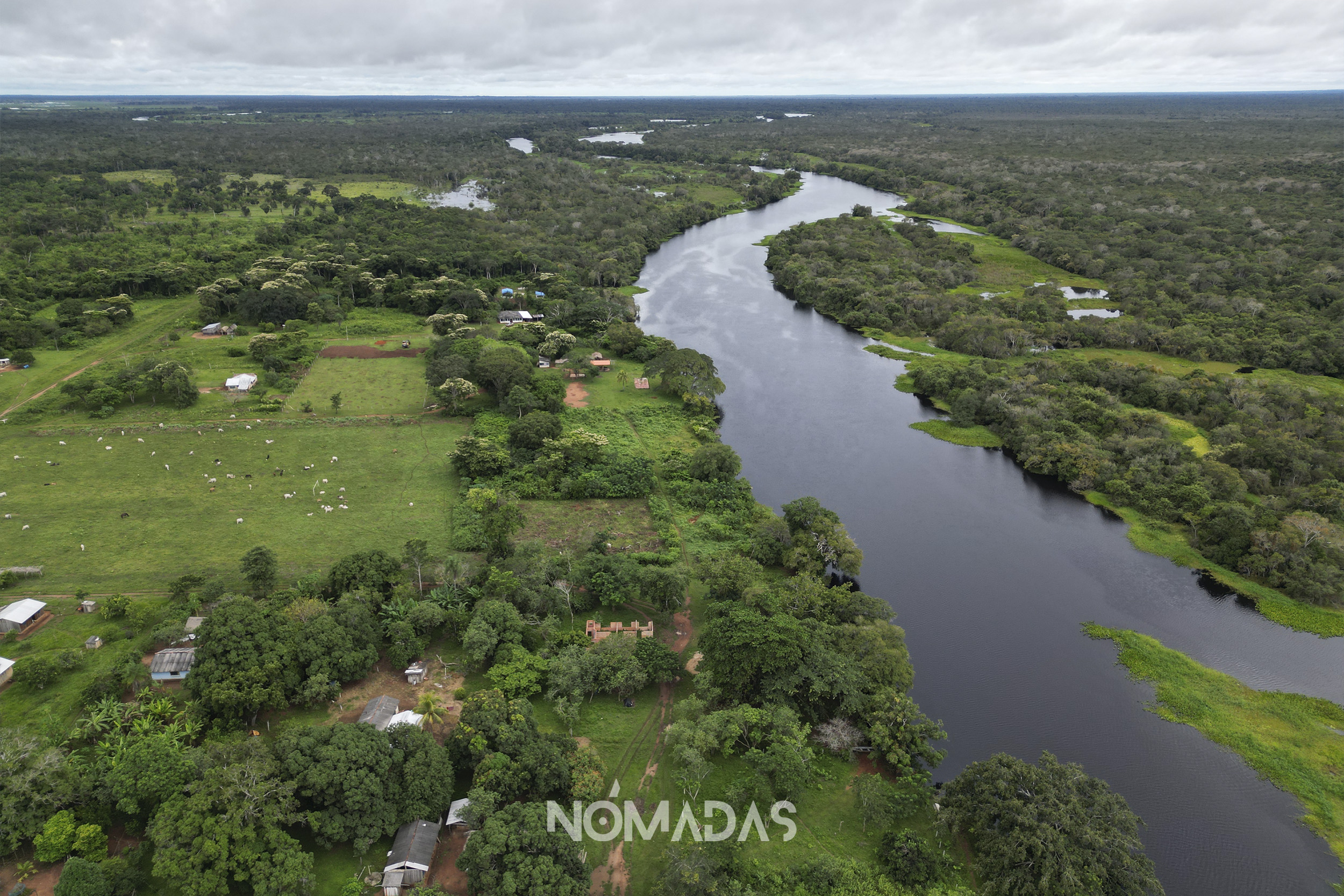
The majesty of the Bolivian Amazon, embraced by rivers and indigenous communities. Photo: Karina Segovia.
August 21th, 2023
Indigenous people are fighting against multiple threats that loom over their home. The voracity of deforestation, forest fires, drug trafficking, and river pollution endanger their sacred land. With bravery and ancestral connection, these guardians of the jungle resist, protecting the planet’s lungs and defending their right to live in harmony with nature.

Roberto Navia Gabriel
Journalist
Here, the tail of evil climbs up the tree branches and spies through the small windows of indigenous huts, attempting to invade their deep dreams granted only by the forest.
Here, in the Bolivian Amazon —unknown to the world— evil has different faces and teeth, and its revealing eye strives to discover the guardians of the jungle who do not surrender.
When it has them in sight, it goes after them, making their lives impossible and creating hell for them. It makes them feel threatened in their own homes and pursues them wherever they go. But the strength with which the custodians of the Amazon in Southamerica, the largest tropical forest in the world, where Bolivia holds a piece of land measuring 824,000 square kilometers, representing 70% of its national territory and 11% of the entire continental Amazon basin, does not wane in the face of the onslaughts that evil attempts to bring down the protective shield inherited by the indigenous people from their ancestors.
Ruth Alipaz is a woman who is also fighting for her life, because she knows that the mercury will never leave her body and that she is learning to live with it and endure the symptoms that return when least expected.
Evil, in this remote point of the planet, is represented by the insatiable appetite for deforestation that places Bolivia among the top three countries in the world with the highest loss of primary tropical forest. According to the report presented by Global Forest Watch of the World Resources Institute, in 2022 alone, Bolivia lost 386,000 hectares (3,860 km²), a 32% increase compared to 2021.
In Bolivia, in just one year—2022—the primary tropical forest was cleared at a rate comparable to 1,057 football fields per day.
Every day, without rest or quarantines.
And 2021 was not a better year: Mapbiomas platform for Bolivia, which provides the most up-to-date and reliable data, revealed that deforestation and conversion in the South American nation reached historical levels. Throughout the country, 380,249 hectares of forest and 259,002 hectares of non-forest ecosystems were lost. In other words, approximately 639,251 hectares of nature were lost, equivalent to one-sixth of the surface area of the southern department of Tarija. The deforestation and conversion that occurred in 2021 accounted for 33.4% of the total deforestation in the previous five years.
The dark side is also represented by the forest fires that arrive punctually every year to ravage millions of hectares of jungle; by the pollution of the Amazon rivers, where hundreds of illegal mining companies operate, whose mercury waste travels through the veins of the inhabitants of at least thirty indigenous communities who rely on poisoned fish for their sustenance; by drug trafficking, which hides its cocaine factories among the dense trees and also opens clandestine airstrips; by projects that threaten the construction of dams, and by the actions of authorities who, far from supporting the fight to protect the jungle, target the guardians. Equipped with an intimate connection to the land, air, and water, they resist bending to the dark forces that threaten their sacred abode.
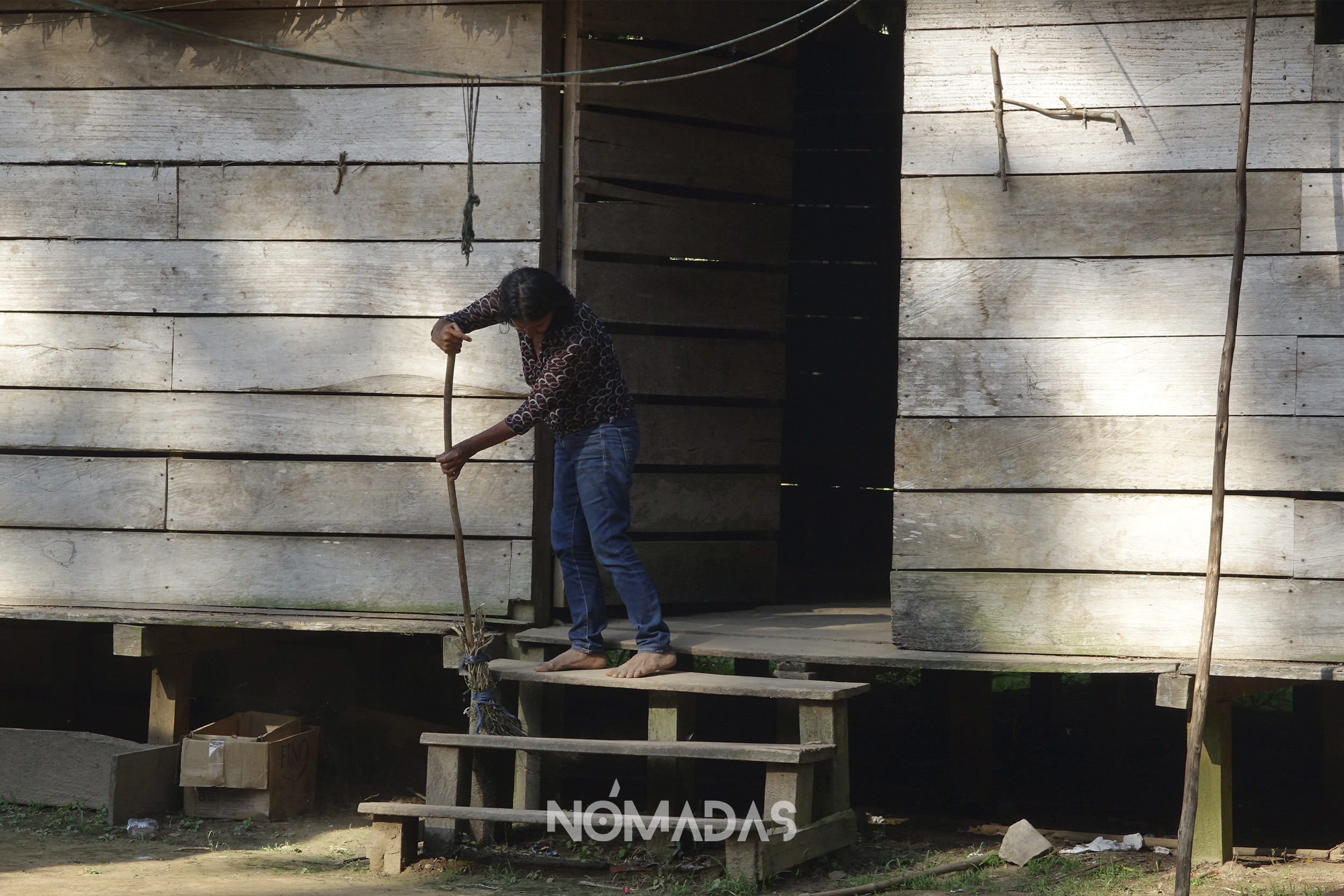
Dionicia Herbi, Yuracaré indigenous. Photo: Karina Segovia.
The day has started well in Rurrenabaque. As usual. In this town in the Beni department, in northern Bolivia, the days usually go by without mishaps, despite the fact that the waters of the Beni River flowing alongside it are contaminated.
In its dark waters, the measured metal of mercury lurks.
The investigation commissioned by the Central de Pueblos Indígenas de La Paz (CPILAP) states that the residents of 30 indigenous communities living along the banks of the Beni River and other tributaries exceed the mercury limit in their bodies allowed by the World Health Organization.
***
Alex Villca Limaco knew about this reality long before the study came to light last June. He said it many times whenever he could, even though speaking the truth had brought him bitter days. Alex knew that defending the environment required arduous effort and constant dedication. It meant exposing his physical integrity, that of his family, and the members of San José de Uchupiamonas, a community nestled among mountains and rivers within Madidi, the most biodiverse national park in the world, spanning nearly 19,000 km² to the west of the La Paz department.
Now, Alex’s brown body is sitting amidst lush vegetation in Rurrenabaque, where he lives. His thoughts wander through the herd of his thoughts. His voice, sounding like a bugle, calls not for war but for peaceful resistance to halt the attacks on the Amazon.
Alex’s crusade has not been exempted from threats. He has faced discreditation and stigmatization. Despite the difficulties, he has found support in his close family, who understand the importance of his fight and stand behind him in his task of defending individual and collective rights.
Alex Villca Limaco, 45 years old with a robust build, finds strength in his family’s ancestral legacy and the deep connection they have with nature. His great-grandfather, Francisco Navi, was a renowned shaman in the Uchupiamonas nation and passed down through the generations an understanding and profound respect for Mother Nature. Alex feels the responsibility to continue that tradition and preserve the knowledge and wisdom possessed by his ancestors.
Alex was born in Santa Catalina, in the municipality of Apolo in the La Paz department, but he spent much of his childhood in San José de Uchupiamonas. This man with a profound gaze doesn’t have enough fingers on his hands to enumerate the number of violations and threats that environmental defenders have faced: «In 2022, there were about 200 recorded threats nationwide. In Bolivia, there is no observatory monitoring this reality.»
It is not recorded anywhere, for example, that Alex Villca Limaco was a victim of attacks through a website that «someone» created to damage his image, to portray him as an opportunist.
Every time he opposed mining operations in the Beni River basin and its tributaries, piracy of timber within Madidi, or the construction of dams, messages on social media tried to tarnish his image. The threats also extend to park rangers from mining cooperatives.
In this vital point of the Amazon, he is not alone in dedicating his days and nights to the defense of the jungle.
***
Ruth Alipaz Cuqui walks like a bird whose wings are spread as if it were about to take flight. That trail of freedom and firmness, like an Amazonian wind, is also projected in her voice.
«In 2015, the government signed an agreement for a study on the construction of hydroelectric plants in the Chepete and Bala areas, on the Beni River. That sparked my concern. Along with other environmental defenders, I joined the Mancomunidad de Comunidades Indígenas de los Ríos Beni, Tuichi y Quiquibey, which has led the fight against these hydroelectric plants.»
The defense of Madidi and its natural resources has not been easy for Ruth Alipaz. She has faced constant threats from economic interests linked to timber exploitation and mining activities. These attacks have sought to intimidate her and silence her voice through WhatsApp messages that she can see when she leaves the forest and manages to connect to the internet. She has experienced physical threats and defamation, accused of lying about her indigenous origin and having hidden economic interests.
But the greatest harm she has suffered from the miners is the mercury they use to extract gold from the Amazon rivers, which she now has in her body. Through clinical analyses conducted by the National Coordinator for the Defense of Indigenous Origin Peasant Territories and Protected Areas (CONTIOCAP), she discovered that the majority of indigenous communities living in or near the Madidi National Park are contaminated with high levels of the heavy metal.
Ruth is a woman who also fights for her life because she knows that the mercury will never leave her body, and she is learning to live with it and endure the symptoms that return at unexpected times: fatigue, diarrhea, nausea…
Despite everything, she strives to lead as normal a life as possible. With her slender body, light as a bird’s, she walks quickly along the paths and trails of the Bolivian Amazon. Her voice, melodic and fearless like a macaw’s, has the strength to mobilize her neighbors so that, together, they can join forces.
«The defenders of the jungle have been taken away our right to have a family lunch, a birthday celebration. There is a photo with us and a photo without us because it is preferable not to appear publicly with our loved ones to protect them from violence and possible attacks. They can identify them and target them, which is where it hurts the most: when they harm your family, your friends, people who are close to you and shouldn’t have to bear all this,» she says.
In this titanic struggle, the figure of Marcos Uzquiano also stands out, a park ranger who was born 46 years ago in San Buenaventura, a town located in the tropical forest of La Paz department.
***
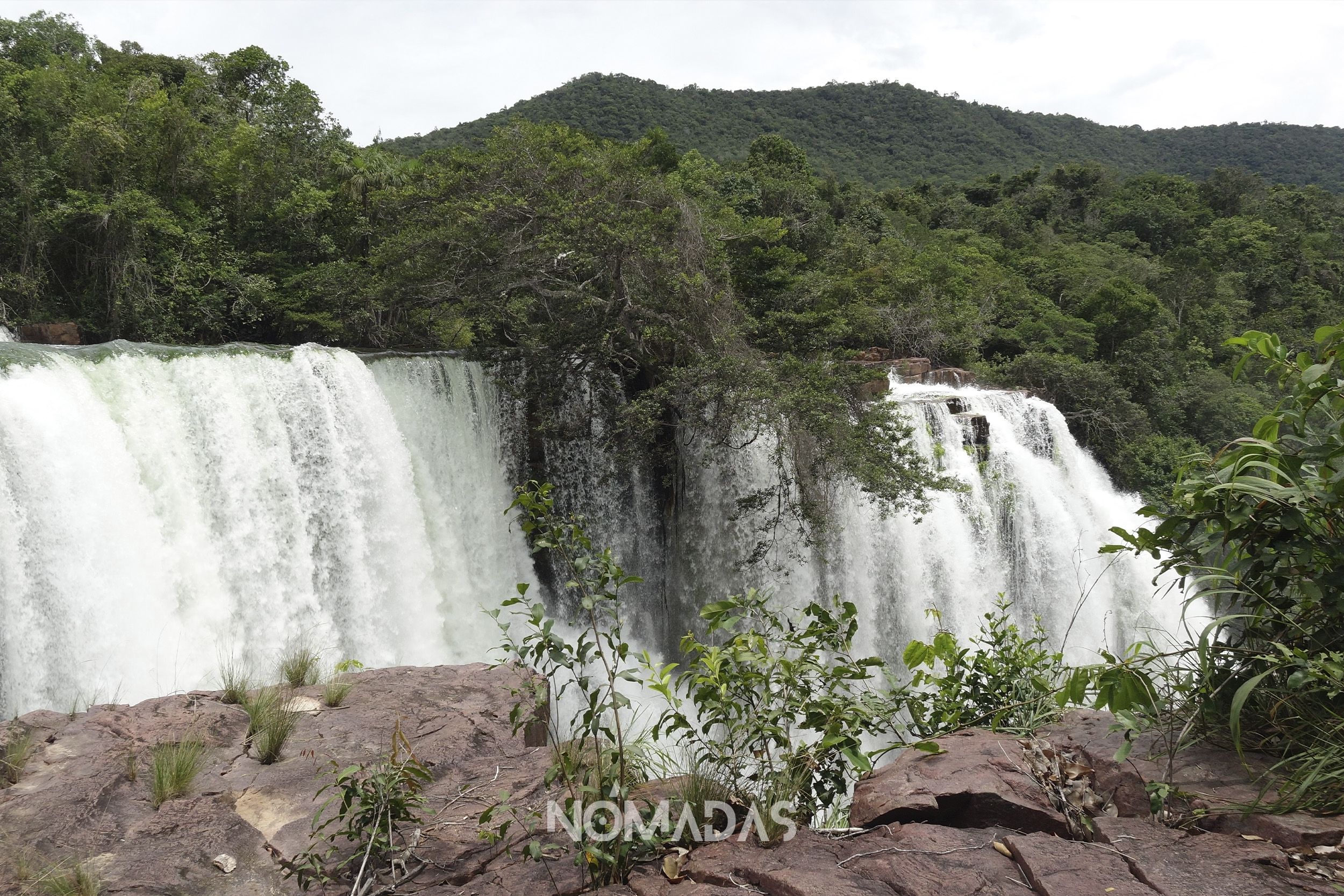
Ahlfeld waterfall in Noel Kempff Mercado National Park. Photo: Karina Segovia.
Marcos Uzquiano dreamed of becoming a jaguar (Panthera onca) from an early age. Accompanied by his grandmother, who revealed to him the secrets of a magical potion, he explored the countryside in search of leaves with the color of the «tiger.» With the desire to protect the great American feline and scare away hunters, Marcos longed to become one of them. However, despite his attempts at transformation, the formula never worked.
Over time, Marcos grew up and became a park ranger. In his position as interim director of Madidi National Park (before the government moved him elsewhere under pressure from mining companies), he fulfilled the dream of his childhood: dedicating himself to investigating and protecting the jaguars that are being hunted by traffickers, attracted by the high demand for their fangs in China.
Marcos has acquired a deep understanding of the language of the jungle throughout his more than 20 years working in the National Service of Protected Areas (SERNAP). During this time, he has had many encounters with jaguars, the felines he knew as tigers when he was a child.
Although at some point she thought about resigning, she decided to face the accusations and defend her innocence. Her struggle has been recognized and supported by numerous jungle activists.
Every day, Marcos ventures into the majesty of the forest guided by the love and respect he has always had for these magnificent animals. His commitment and bravery reflect the dream of a child come true, a legacy of protection and conservation that continues with every step he takes in the Amazon rainforest.
«I have never been attacked by jaguars,» he says, with a firm intention to break the myth that «tigers» attack people.
Those who have attacked him, often and repeatedly, have been human beings, whom he denounces for attacking nature or for their passivity in not taking actions they can perform from their positions of authority.
The mining sector has been one of the main actors exerting pressure on him, endangering his life and job security. The situation reached a critical point when illegal miners pressured the Bolivian government to have Marcos transferred from Madidi National Park. These powerful actors, backed by their political, economic, and social influence, have created a parallel state within the state itself. They have blocked roads, threatened authorities, and exerted strict control over protected areas as if they were territories under their dominion.
In the end, they not only succeeded in having Marcos removed from Madidi Park and sent him to the Beni Biological Station Biosphere Reserve but also one of the miners he confronted and fought against initiated a legal process against him for defamation and slander. If the legal dispute prospers in favor of the miner, Marcos Uzquiano could be disqualified from continuing as a park ranger and employee of the National Service of Protected Areas.
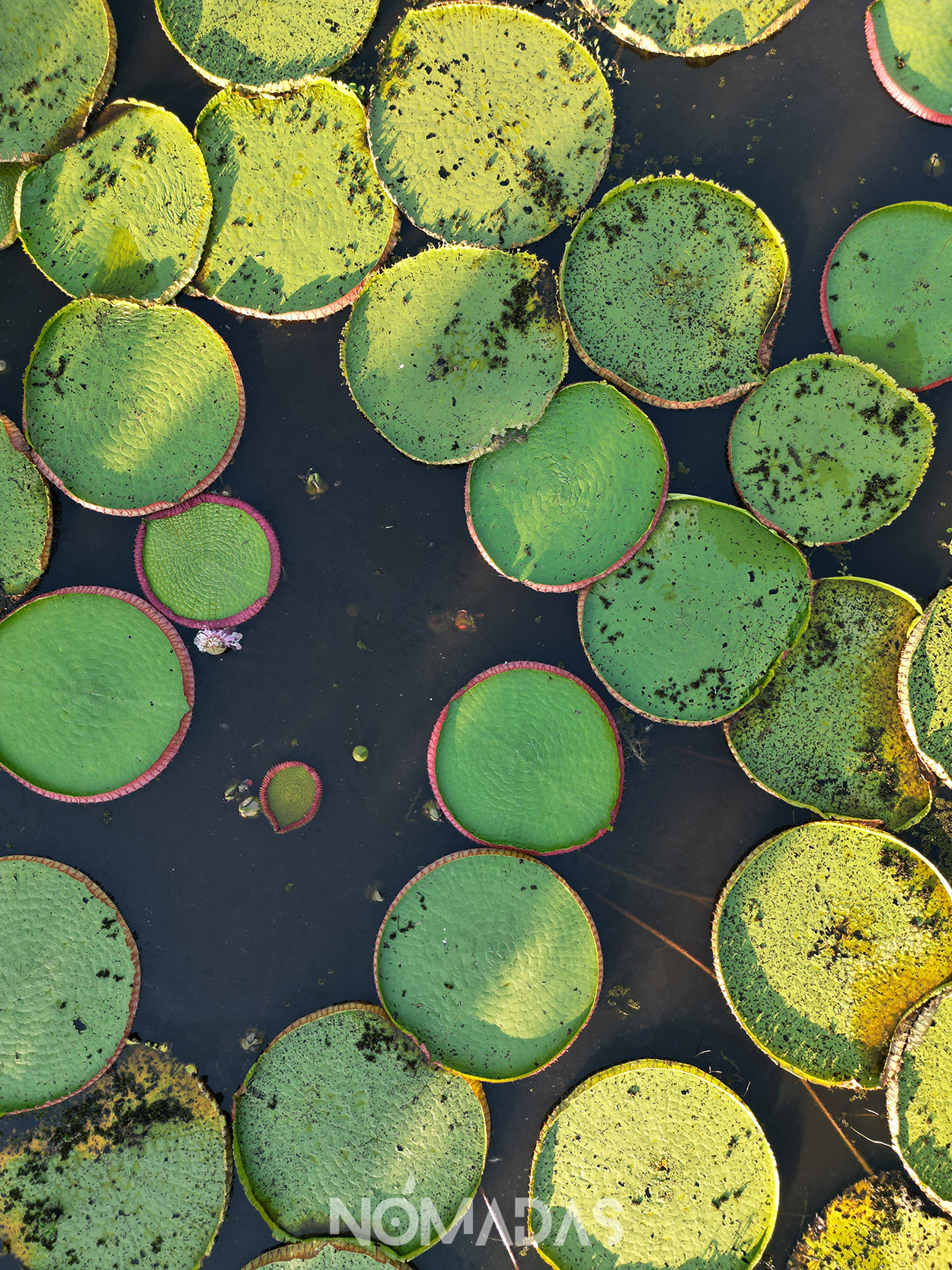
The Bolivian Victoria, emblem of the Bolivian Amazon’s north. Photo: Karina Segovia.
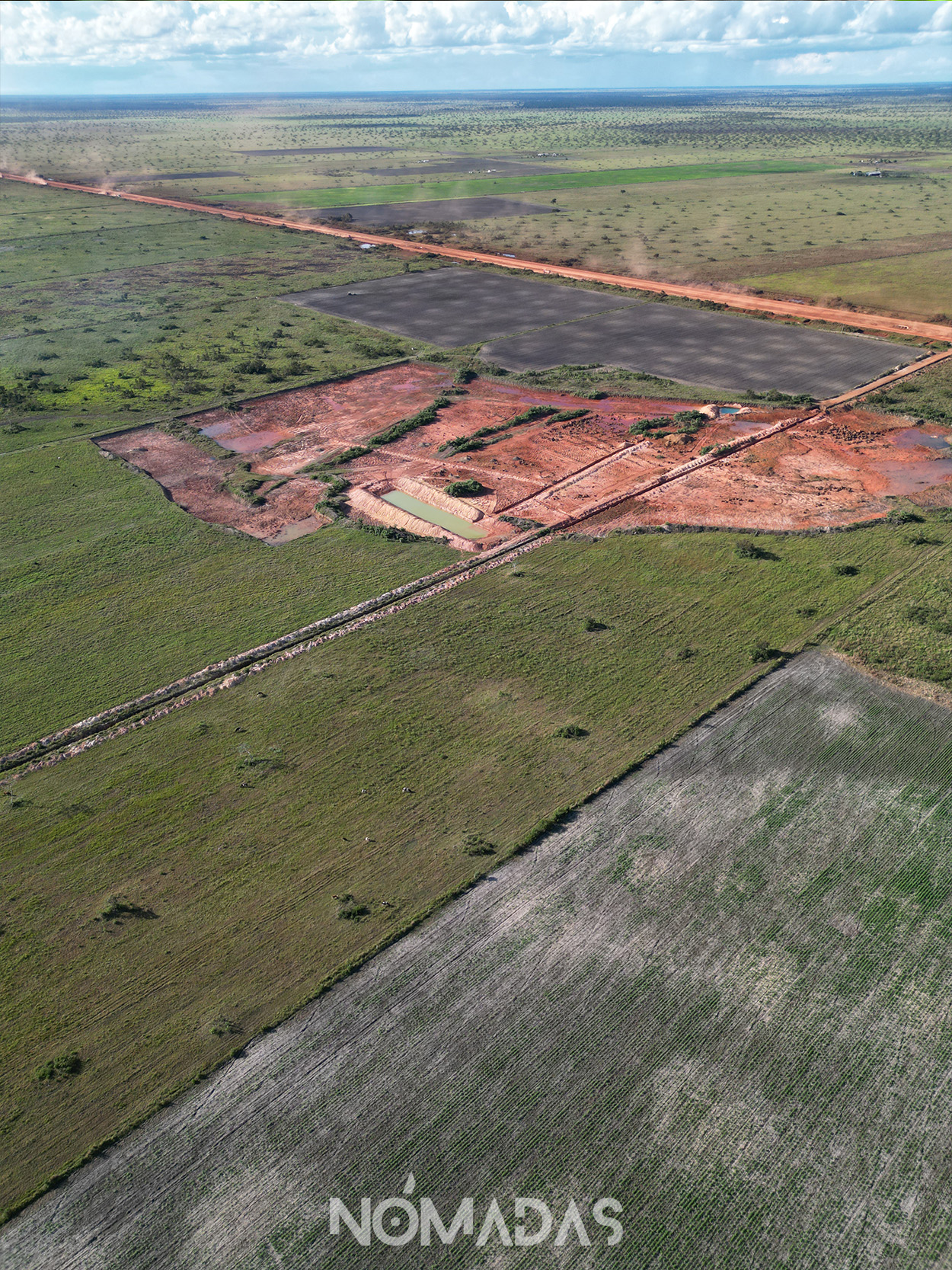
Agricultural production in land with a forest vocation, in the heart of the Bolivian Amazon. Photo: Karina Segovia.
Illegal miners have found fertile ground in Madidi National Park and its surroundings within the Amazon itself. They have occupied protected areas, operating under the facade of mining cooperatives and with the complicity of foreign capital, including Chinese companies. Their power and influence have undermined the ability of park rangers, many of whom are indigenous, to exercise effective control, putting the integrity of these unique natural spaces in the world at risk.
The confrontation with Uzquiano has also taken place in the institutional sphere. The National Service of Protected Areas initiated an internal process against him, accusing him of a supposed offense committed in 2020. He is certain that these accusations appear to be a reprisal for his tireless work in defense of the Amazon.
Despite the obstacles and threats, Uzquiano has remained steadfast in his commitment to nature conservation. Although he considered resigning at one point, he decided to face the accusations and defend his innocence. His struggle has been recognized and supported by numerous jungle activists.
Three hours’ walk from Ahlfeld, the Rainbow Waterfall appears, offering a spectacle of vibrant and brilliant colors that intertwine with the water in its steep descent.
The power of illegal miners lies in their ability to influence political and economic power, exerting pressure on the government and destabilizing protected areas. Their strength lies in the support of communities and the lack of effective legal action by the state. This disproportionate power has weakened Madidi National Park and put the integrity of its defenders at risk.
But nothing stops Marcos Uzquiano. He has a proven ability to traverse long distances along forest trails, navigate small boats through the wild and calm rivers of the Amazon, and confront those he encounters on his path, from lawless miners to jaguar fang traffickers. He skillfully maneuvers an outboard motor as well as a paddle to avoid shipwreck in the choppy waters of lakes and lagoons. And in public settings, whether in an interview or a speech, he verbally confronts criminals and even the authorities who, while having the power to act, do nothing to combat the enemies of the jungle.
Sometimes, when you see him alone in the moonlight in the woods, you can perceive his feline gaze, crouched on a trunk of reality, alert to prevent evil from climbing the tree branches or nursing the wounds he accumulates in his crusade to make Bolivian Amazon visible along with its relentless problems.
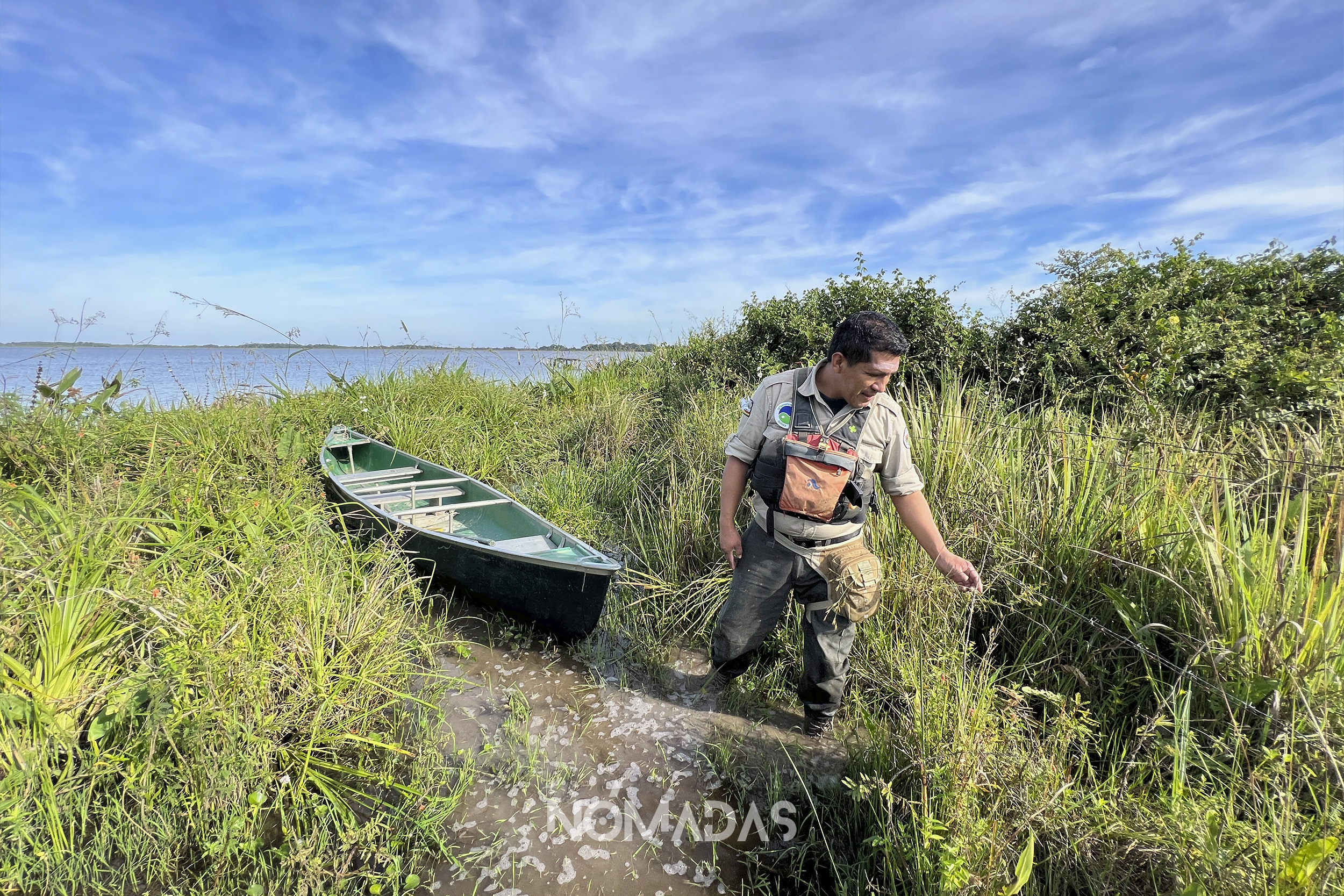
Marcos Uzquiano, park ranger threatened by miners. Photo: Lisa Corti.
The case of Uzquiano, is not that of an isolated fighter. Other defenders experience their own hell in the places they have made their battle headquarters.
***
In the indigenous community of Porvenir, within the Municipal Protected Area of Bajo Paraguá (983,006 hectares within the Santa Cruz department), there is Maida Peña, a fervent defender of the Bolivian Amazon. Her dedication has led her to face numerous challenges in her quest to preserve one of the most precious treasures of our planet: the Chiquitano Dry Forest.
The Chiquitano Dry Forest unfolds majestically as an ecoregion that encompasses a large part of Bolivia, especially the Santa Cruz department, and subtly extends into the north of Paraguay and west into Brazil. With over 24 million hectares, it is the treasure of a unique tropical dry forest in the world. Its cycles of six months of rain and six months of drought give it a uniqueness in its biodiversity but also make it an extremely delicate jewel.
A rainbow of multiple shades unfolds before cheerful eyes, bathing the surroundings in a palette of hues that whisper stories from other times.
Maida bears witness to how the health of lowland indigenous peoples has been threatened and unprotected. Her words, filled with concern, explain how the solitude in which indigenous communities find themselves has led them to face a series of challenges: water scarcity in the region has reached alarming levels, severely affecting the lives of communities that depend on rivers.
Maida knows that not far from Porvenir, in communities like Miraflores, water extracted from deep underground reservoirs is already being sold, just like bread and gasoline. Private water outlets are gradually being established to try to quench the thirst that the forests—which are the natural generators of rainfall—can no longer satisfy because many forests no longer exist. They were forcibly torn down by the metallic teeth of deforestation or the tongues of fire from forest fires that, year after year, show no mercy and increasingly anticipate their arrival, wielding their payloads of destruction.
Now, what exists in the green lungs of the Amazon are several gray patches, which echo the disappearance of vanished lagoons, as if it were an apocalyptic tragedy. Indigenous and peasant communities are deprived of their sources of food, forests with a vocation for forestry are turned into deserts, and temperature changes crowned by droughts drive wild animals to knock on human doors because they can no longer bear the thirst.
The situation is further aggravated by the sale of water by entities with the resources to privately drill wells, a vital resource that is now being commercialized in some areas of the Chiquitania. Drug trafficking has also found its way into the region, contaminating rivers and endangering the lives of local inhabitants. Maida not only fights for forest preservation but also for the survival of another indigenous people, the Guarasugwe, who face the threat of extinction and the loss of their ancestral knowledge.
Maida Peña has reported that drug traffickers have pressured her to resign from her position as Chief of Porvenir, where she firmly fought against them. Despite the difficulties, she says she feels an inner peace that she can only attribute to the divine protection she has received. Although she feels trapped in her own home and limited in her actions, she has stated that her determination remains intact.
Her latest battle is to convince the government to set up roadblocks on the 200 km dirt road that leads to the gates of Noel Kempff Mercado National Park in order to control motorized traffic associated with illegal activities.
***
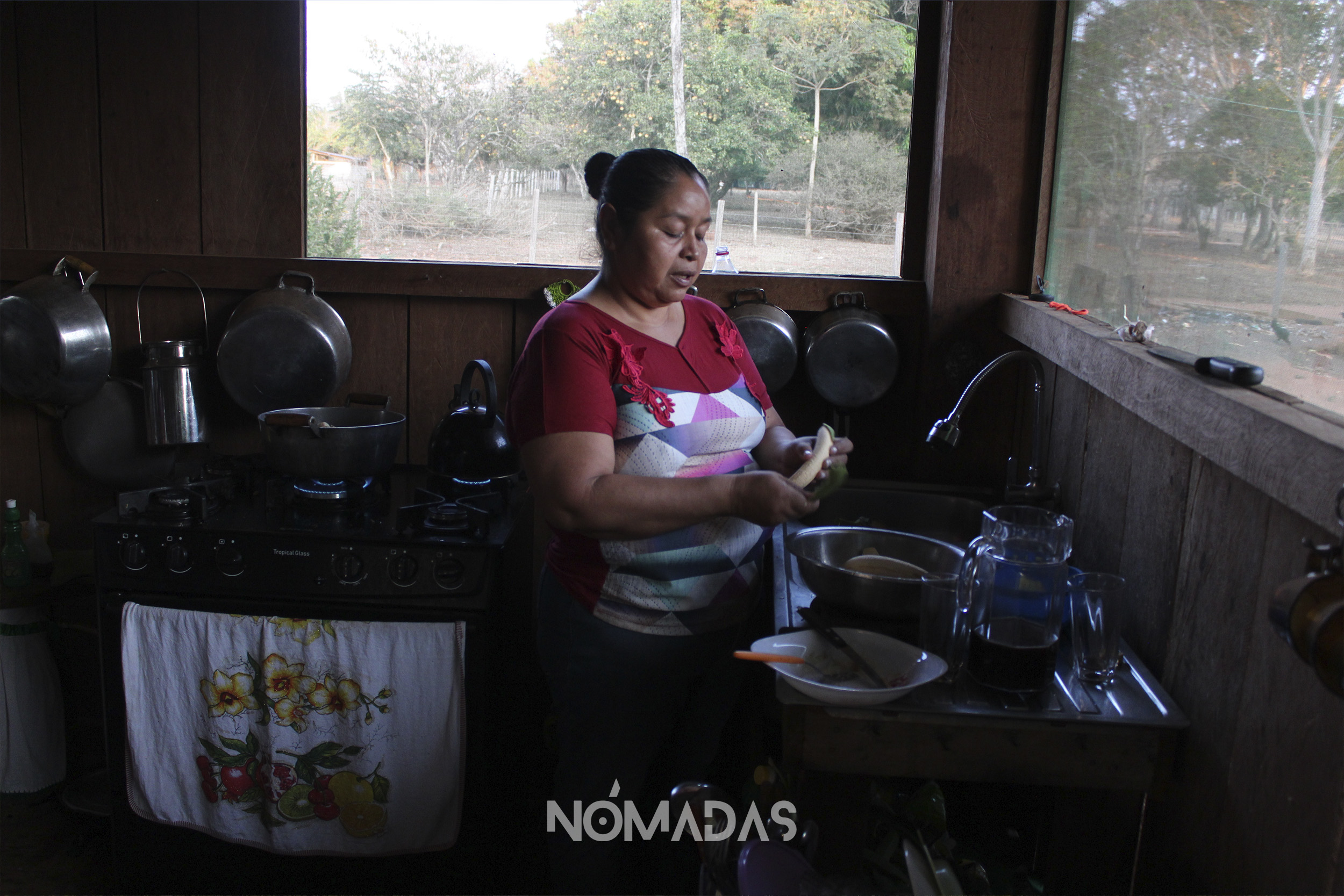
Maida Peña, former chief of Porvenir. Photo: Clovis De la Jaille.
Piso Firme is the gateway to Noel Kempff Mercado National Park. In a house on the banks of the Paraguá River, there is Hortensia Gómez, the Chiquitano Chief who covers her large ears with her hands to ward off the deafening noises when deforesters cut down trees without any human or state power to stop them. Although this corner of the Bolivian Amazon is a paradise for those who live here, for Hortensia, it is also a constant reminder of the threats and challenges she faces as an environmental defender because the illegal activities she cautiously speaks about keep her in constant suspense.
Hortensia wants this dreamlike place to last forever, with postcard-worthy landscapes on the banks of the Paraguá River that flows into the Itenez or Guaporé River, which Bolivia shares with Brazil. Piso Firme, with its 500 inhabitants, relies on fishing, agriculture, and livestock for sustenance. Additionally, tourism is on the rise within Noel Kempff Mercado National Park, a UNESCO World Heritage site, attracting visitors who want to explore the Ahlfeld and Arco Iris waterfalls, considered among the most beautiful in the world.
The thoughts of Alex Villca Limaco travel propelled by the herd of his ideas. His voice, sounding like a bugle, doesn’t call for war, but for peaceful resistance to halt the attacks on the Amazon.
The Ahlfeld waterfall, named in honor of German geologist Federico Ahlfeld, cascades like a veil of clear and crystalline water that falls in multiple steps. With each descent, the musical roar and rising mist create a magical atmosphere. The wild energy of the waterfall fills the air, while the cool water caresses the faces of eternal wanderers who have witnessed this spectacle since ancient times.
Three hours’ walk from Ahlfeld, the Arco Iris waterfall appears, offering a display of vibrant and brilliant colors intertwining with the descending water. An arc of multiple hues unfurls before delighted eyes, bathing the surroundings in a palette of shades that whisper stories from bygone times.
However, amidst such beauty, Hortensia is aware of the threats that loom over this region. The encroachment of protected lands by settlers who have connections with the government is one of the main concerns, as the lack of respect for the Amazon endangers the flora, fauna, and peace of indigenous communities.
The construction project of a 254 km road from Santa Rosa de la Roca to Piso Firme is a source of sadness and concern for Hortensia. Although they understand the need for asphalt, she also fears the negative consequences it may bring, such as increased encroachments and damage to the local flora and fauna.
Hortensia finds solace and joy in the diversity of animals that inhabit the region. From the deer and jaguars that cross her path to the capybaras, otters, lizards, and turtles she observes during her river journeys.
«Every encounter with the local fauna is a reason for happiness and astonishment,» she says, while her round smile attempts to mock the threats endured by the forest.
***
Roycer Herbi, an Amazonian indigenous person of the Yuracaré ethnicity, is a 25-year-old young man with keen and accurate vision. His eagle-like gaze never fails, and he can spot, from a long distance, the biodiverse belly of the Sécure River as if he were one of the beings that inhabit its clear and crystalline waters, considered one of the most transparent in the world.
Born in the depths of the northern Indigenous Territory and Isiboro-Sécure National Park (TIPNIS) in Bolivia, Roycer moves with confidence and agility, like a feline, thanks to his long legs and bare feet that walk on the sandy and stony beaches of the Amazonian rivers. His voice carries absolute certainty, and he often asserts with conviction: Sustainable tourism focused on catch-and-release fishing of the golden dorado is a solution to fight against the enemies of the forests, who, in our parents’ time, snatched away the lushest trees we called Grandparents.
Roycer is the guide for fishermen. When he points with his index finger in the direction where he has detected the movement of a large golden dorado, one of the most valuable and admired fish species on the planet, the face of the accompanying fisherman lights up with a huge smile. This fisherman has traveled hundreds, perhaps thousands of kilometers to reach this remote place on the planet. In a few seconds, he will engage in a short but intense battle with the monarch of the fish, only to surrender to the beauty of its iridescent body and deep eyes. After catching his breath, he will let the dorado go like a good friend.
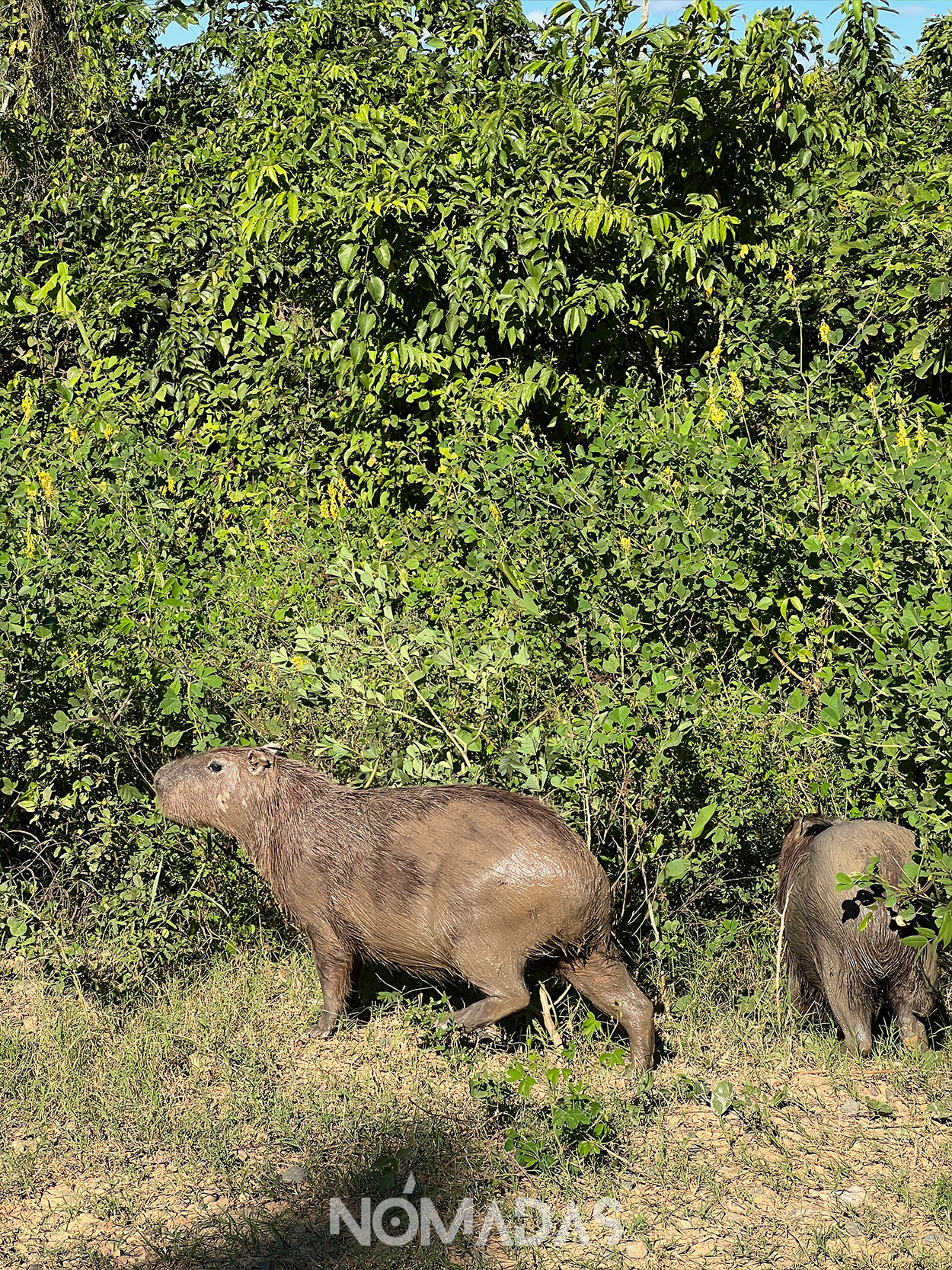
The capybaras bathe in the remaining wetlands. Photo: Lisa Corti.
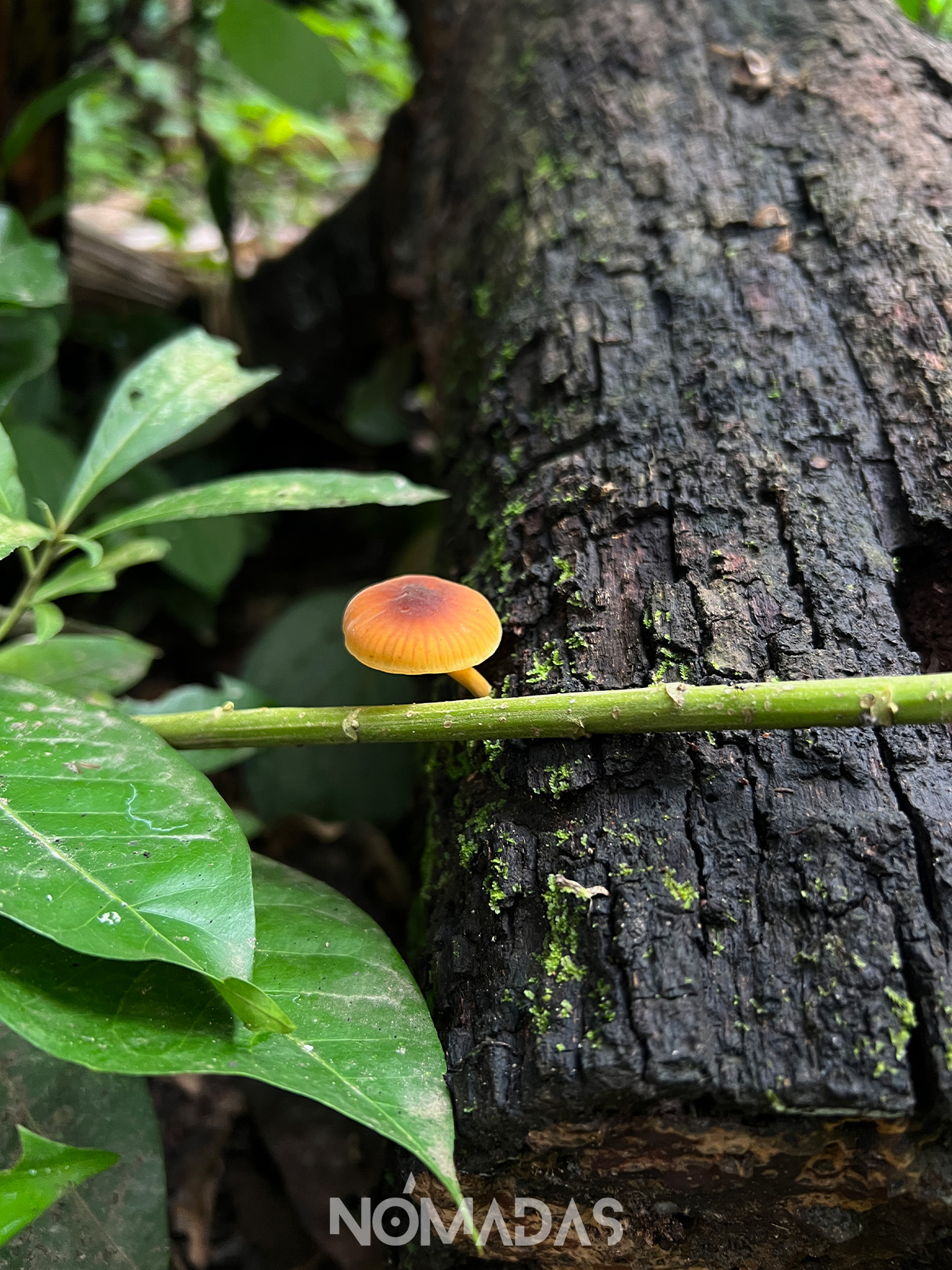
Near Laguna Santa Rosa, mushrooms paint the forest with colors. Photo: Lisa Corti.
The fish will move forward without haste, its silhouette fading before the grateful eyes of the fisherman, but Roycer, who understands the language of the forest, will continue to observe it until it disappears into the tranquil depths of the Sécure River. At that moment, he will wish to be one of them, as there is nothing Roycer likes more than swimming full and free like a fish in these rivers, which are part of one of the best-preserved territories in the world.
Despite the obstacles and threats, Marcos Uzquiano has remained steadfast in his commitment to the protection of nature.
The TIPNIS is a privileged place on the planet, described as «the most beautiful jungle in the world» by the French naturalist and explorer Alcides D’Orbigny, who explored Bolivia between 1830 and 1833. And, undoubtedly, D’Orbigny was not mistaken in using those words to describe this impressive Amazonian region. The TIPNIS covers a protected area of 1,236,296 hectares, almost twice the size of the city of São Paulo, Brazil. It has been a National Park since November 22, 1965, and an Indigenous Territory since September 24, 1990. This vast expanse harbors a great amount of life, making the TIPNIS one of the most biodiverse Protected Areas in the world, second only to Madidi National Park.
Geographically located between the departments of Beni (Moxos province and San Ignacio and Loreto municipalities) and Cochabamba (Chapare and Ayopaya province and Villa Tunari and Morochata municipalities), the TIPNIS is not only important in this epicenter of splendid nature but also drives the development of life throughout the planet.
The Yuracaré, Tsimane, Moxeño, and Trinitario indigenous peoples know that the titles of National Park and Indigenous Territory are fundamental but not sufficient to protect this vital territory for them. They are aware that their enemies never rest and that the forest is a constantly coveted jewel. They also know that this northern part of the TIPNIS is one of the few almost intact places on the South American continent. The lush vegetation contributes to the environmental balance of the planet, and any damage that occurs here will directly affect indigenous communities, depriving them of home, food, rivers, trees, rain, and future happy days.
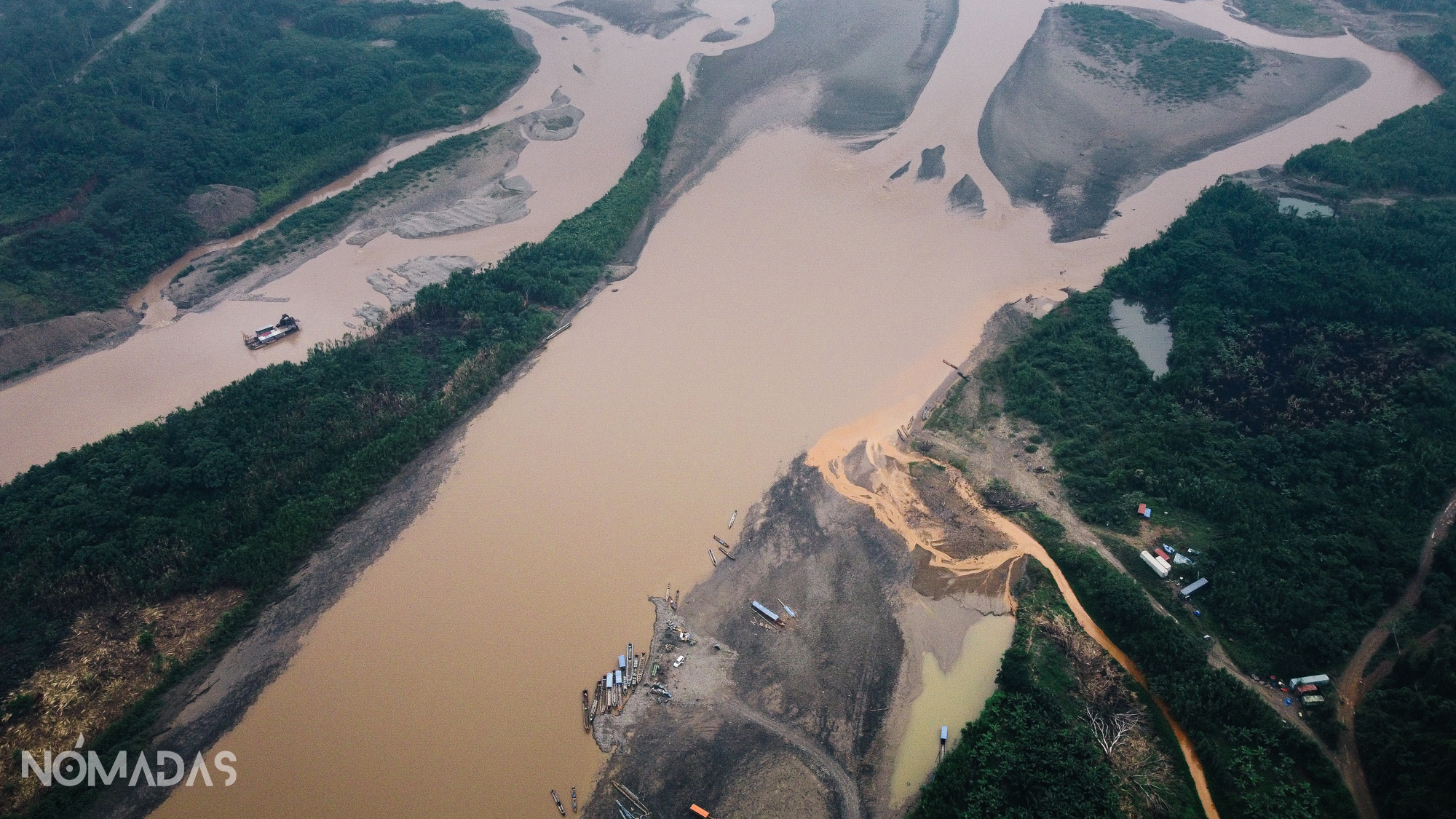
Mining in the Amazon rivers: polluting, nature-destructive. Photo: Manuel Seoane.
This northern region of the TIPNIS is also the refuge for indigenous people who were expelled from the southern area of this indigenous territory, where coca producers have been gaining ground and taking away the ancestral territory of lowland communities.
Roycer Herbi remembers that his parents told him that many years ago, there was a fierce attack by loggers that left the forest without Mara trees, and recently, many families have arrived from the south, escaping from the coca growers who left them without a home or territory.
That is why Roycer has made the cell phone an extension of his senses. He does not use it to call or connect to social networks, but to take photos and document everything that happens within the TIPNIS, whether it is something beautiful or an environmental disaster that he would never want to witness but believes it is necessary to record for the world to know.
He knows that the cell phone is not part of the inheritance of his ancestors. He knows that his grandparents and parents made oral storytelling a wonderful way to immortalize the memory of the Yuracaré people. But he also knows that technological tools, like the cell phone, will not break any intimate connection with the land, air, water, or the wild animals he coexists with and is willing to defend with his own life.
***
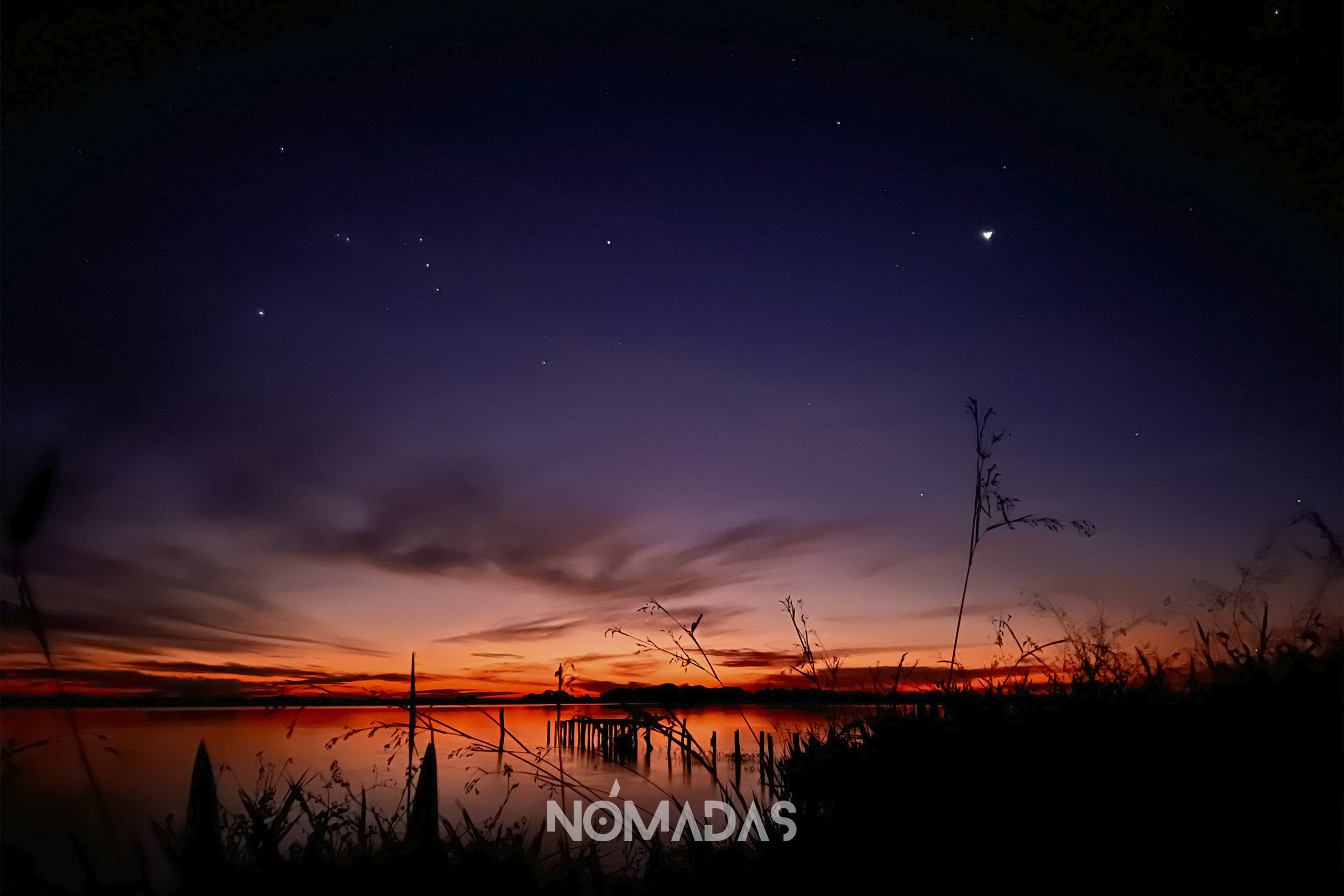
As the sun sets, a spectacle of colors emerges at Laguna Normandía. Photo: Lisa Corti.
This chronicle is part of the Special: Bolivia’s Invisible Amazon and its guardians who do not give up, carried out by Revista Nómadas, with the support of the Amazon Rainforest Journalism Fund in partnership with the Pulitzer Center.
STAFF:
DIRECTOR: Roberto Navia. PRODUCTION MANAGER: Karina Segovia. PHOTOGRAPHS: Karina Segovia, Lisa Mirella Corti. SOUND PRODUCTION AND POST-PRODUCTION: Andrés Navia. ILLUSTRATIONS AND INFOGRAPHICS: Brocha Silvestre. SOCIAL MEDIA EDITOR: Lisa Mirella Corti. WEB DESIGN AND DEVELOPMENT: Richard Osinaga. COLLABORATION: Manuel Seoane, Diego Adriázola y Daniel Coimbra.
COPYRIGHT 2023
Te contamos desde el interior de los escenarios de la realidad, iluminados por el faro de la agenda propia, el texto bien labrado y la riqueza poética del audiovisual y de la narrativa sonora, combinaciones perfectas para sentir el corazón del medioambiente y de los anónimos del Planeta.
